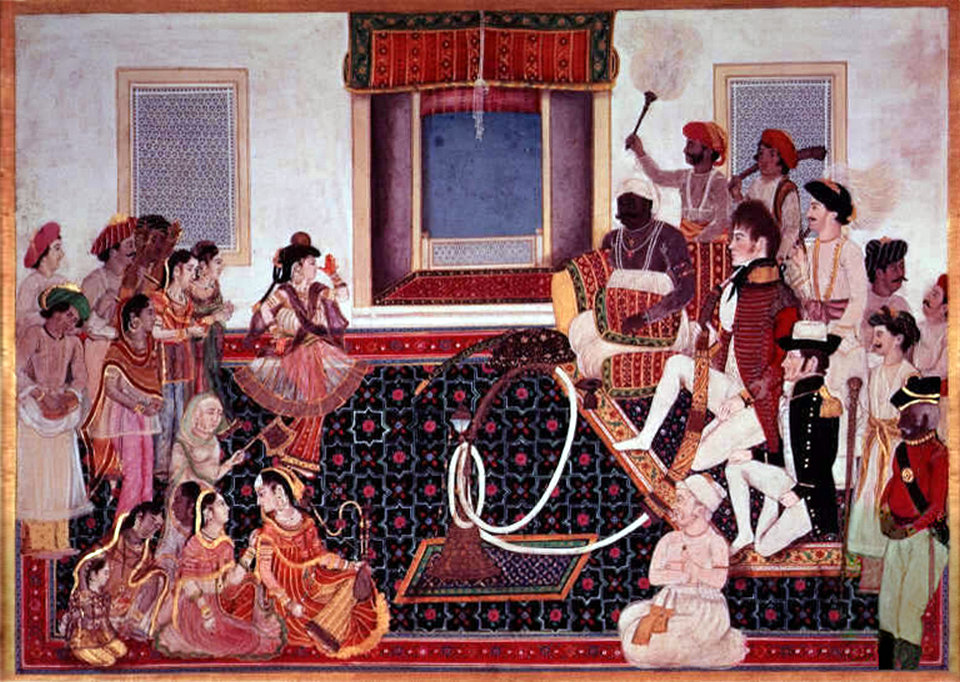Indian red color


Indian red is a pigment composed of naturally occurring iron oxides that is widely used in India. Other shades of iron oxides include Venetian Red, English Red, and Kobe, all shown below.
Color coordinates
Hex triplet #CD5C5C
RGB (r, g, b) (205, 92, 92)
CMYK (c, m, y, k) (0, 52, 52, 25)
HSV (h, s, v) (0°, 52%, 75%)
Chestnut is a color similar to but separate and distinct from Indian red.
Etymology
The name Indian red derives from the red laterite soil found in India, which is composed of naturally occurring iron oxides. The first recorded use of Indian red as a color term in English was in 1792.
Use in painting
Indian red pictorial use from prehistory and antiquity. Due to its resistance to light it is highly appreciated in painting and is considered a basic color for watercolourists and oil painters. It was used by great masters like Rembrandt and Miguel Angel. Often used between the fifteenth and eighteenth centuries, its synthesis from s. XVIII allowed a more uniform color. At present it has wide use in decorative painting for all types of areas, which is appreciated to be permanent, adhesive and anticorrosive (epoxy).
Variations of Indian red
Venetian red
Color coordinates
Hex triplet #C80815
RGB (r, g, b) (200, 8, 21)
CMYK (c, m, y, k) (0, 94, 97, 0)
HSV (h, s, v) (0°, 84%, 84%)
Venetian red is a light and warm (somewhat unsaturated) pigment that is a darker shade of scarlet, derived from nearly pure ferric oxide (Fe2O3) of the hematite type. Modern versions are frequently made with synthetic red iron oxide.
The first recorded use of Venetian red as a color name in English was in 1753.
Deep Indian red
Color coordinates
Hex triplet #B94E48
RGB (r, g, b) (185, 78, 72)
CMYK (c, m, y, k) (0, 50, 50, 25)
HSV (h, s, v) (10°, 50%, 75%)
Deep Indian red is the color originally called Indian red from its formulation in 1903 until 1999, but now called chestnut, in Crayola crayons. This color was also produced in a special limited edition in which it was called Vermont maple syrup.
At the request of educators worried that children (mistakenly) believed the name represented the skin color of Native Americans, Crayola changed the name of their crayon color Indian Red to Chestnut in 1999. In reality, the color Indian red has nothing to do with American Indians but is an iron oxide pigment the use of which is popular in India.
English red
Color coordinates
Hex triplet #AB4E52
RGB (r, g, b) (171, 78, 82)
CMYK (c, m, y, k) (0, 54, 52, 32)
HSV (h, s, v) (357°, 54%, 67%)
This red is a tone of Indian red, made like Indian red with pigment made from iron oxide.
The first recorded use of English red as a color name in English was in the 1700s (exact year uncertain). In the Encyclopédie of Denis Diderot in 1765, alternate names for Indian red included “what one also calls, however improperly, English Red.”
The source of this color is: ISCC-NBS Dictionary of Color Names (1955) – Color Sample of English Red (color sample #15).
Kobe red
Color coordinates
Hex triplet #882D17
RGB (r, g, b) (136, 45, 23)
CMYK (c, m, y, k) (0, 67, 83, 47)
HSV (h, s, v) (12°, 83%, 53%)
The color kobe is a dark tone of Indian red, made like Indian red from iron oxide pigment.
The first recorded use of Kobe as a color name in English was in 1924.
Source From Wikipedia